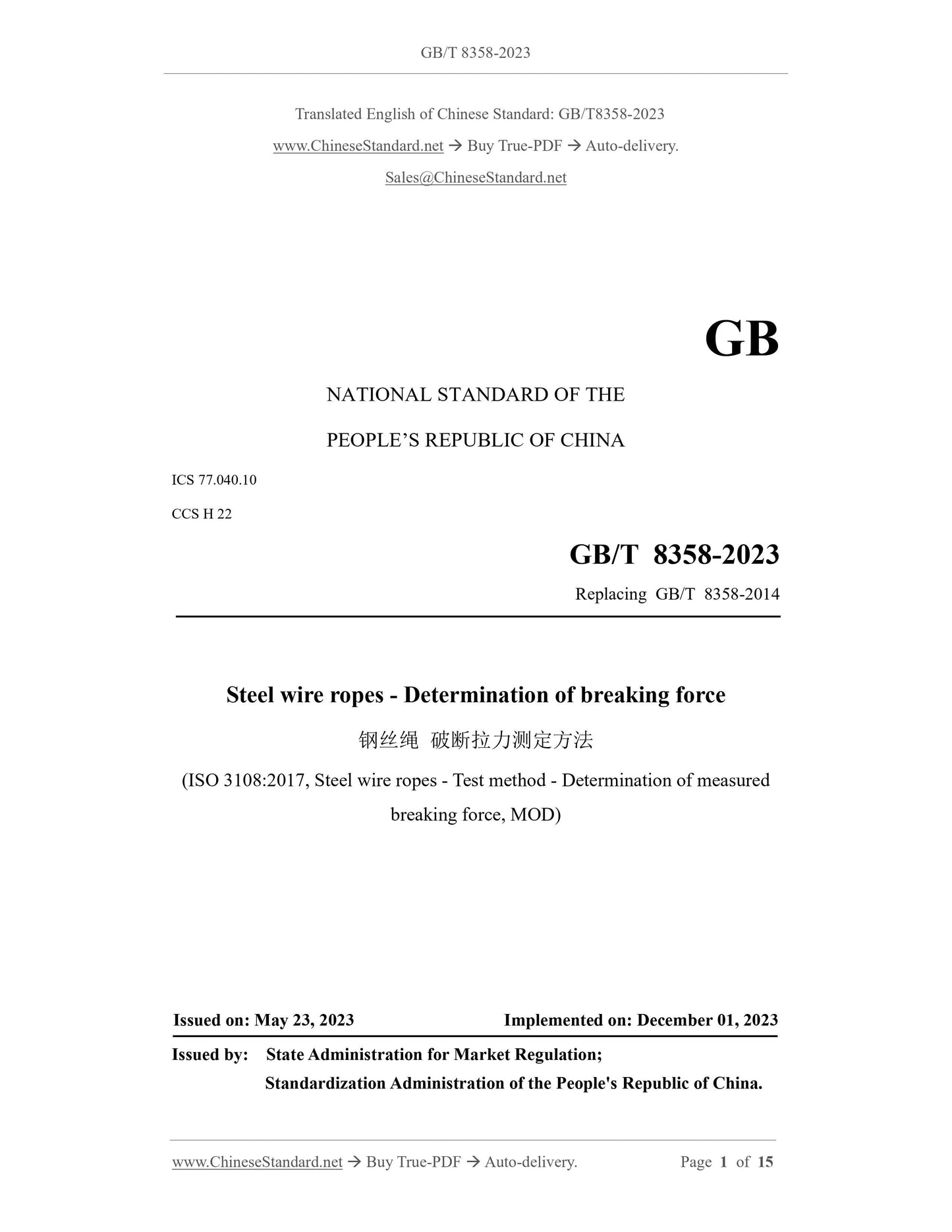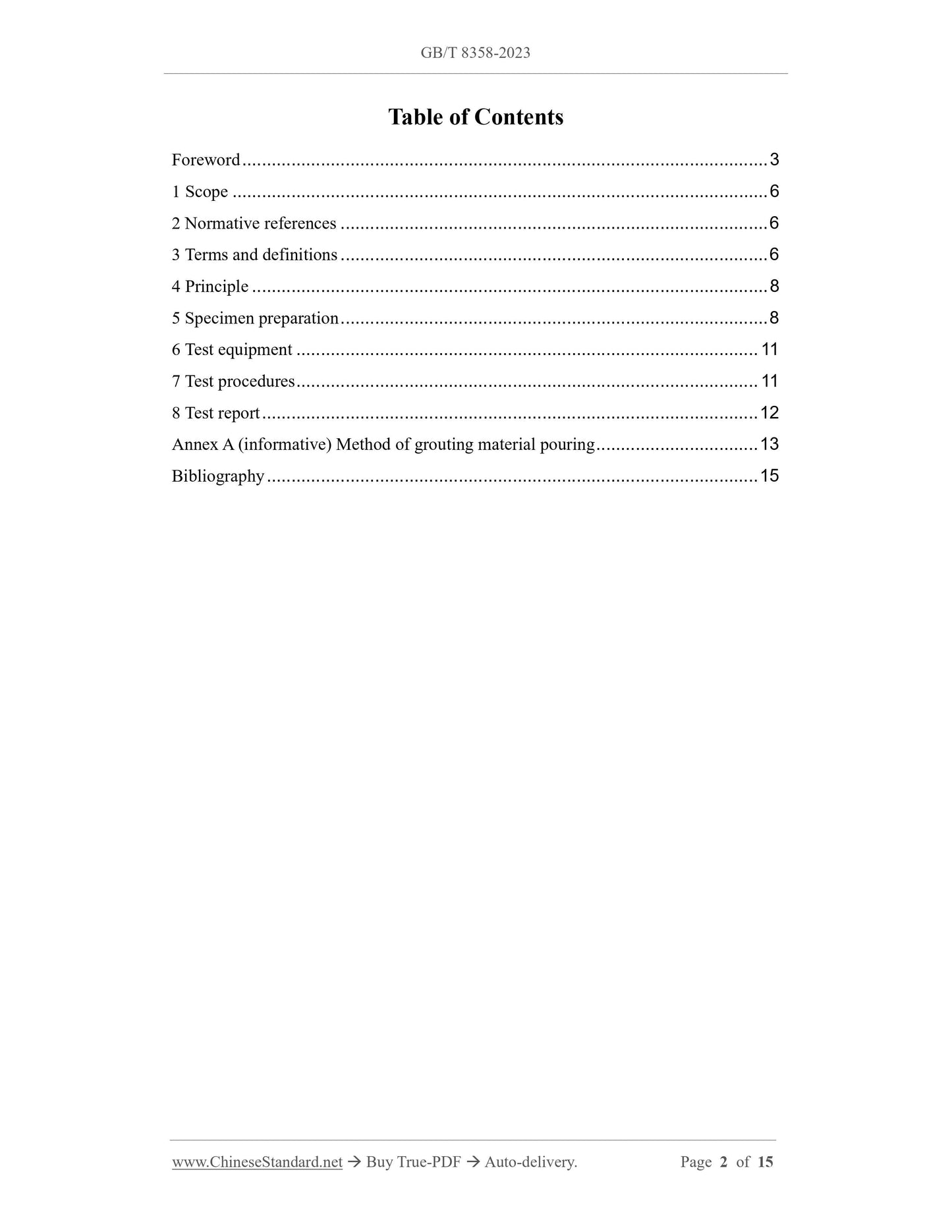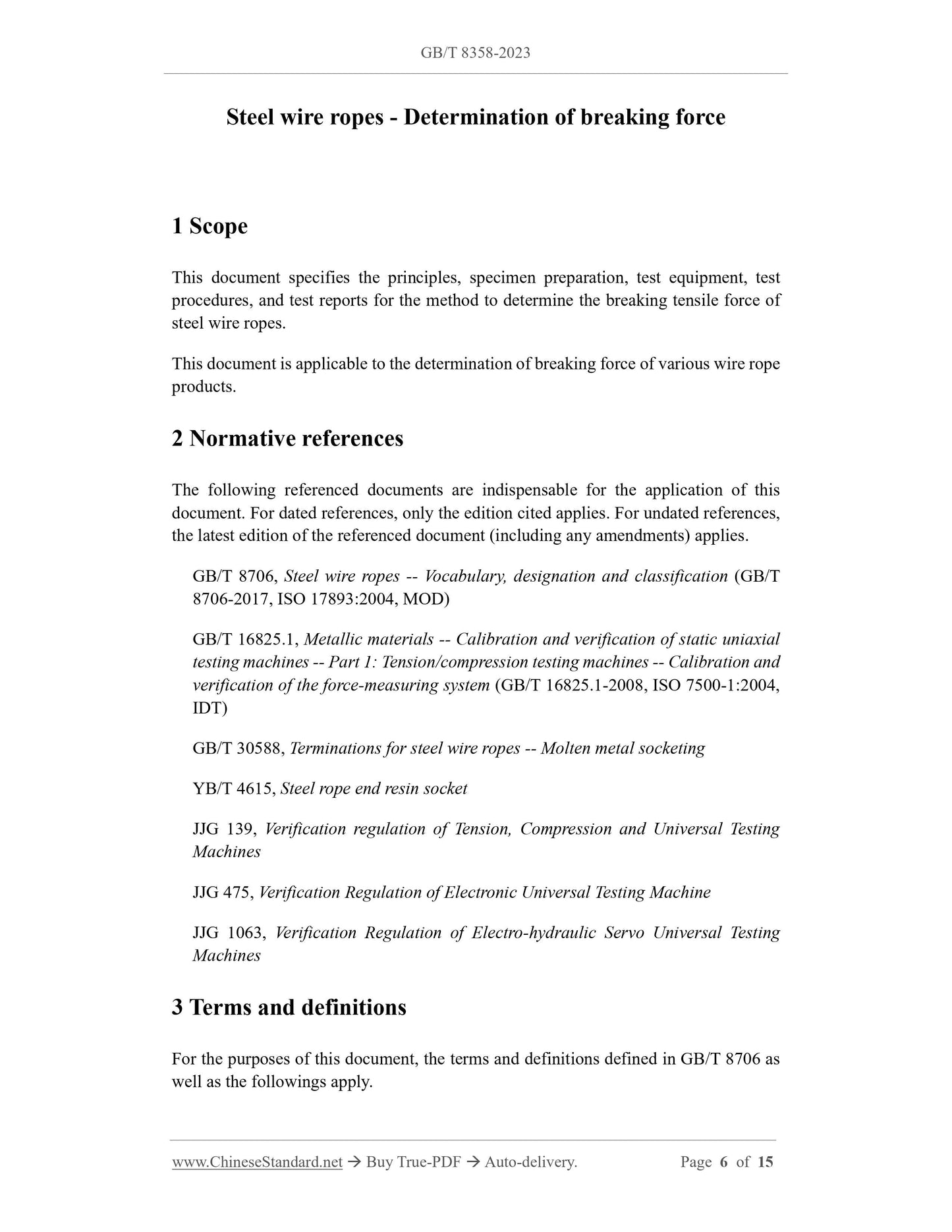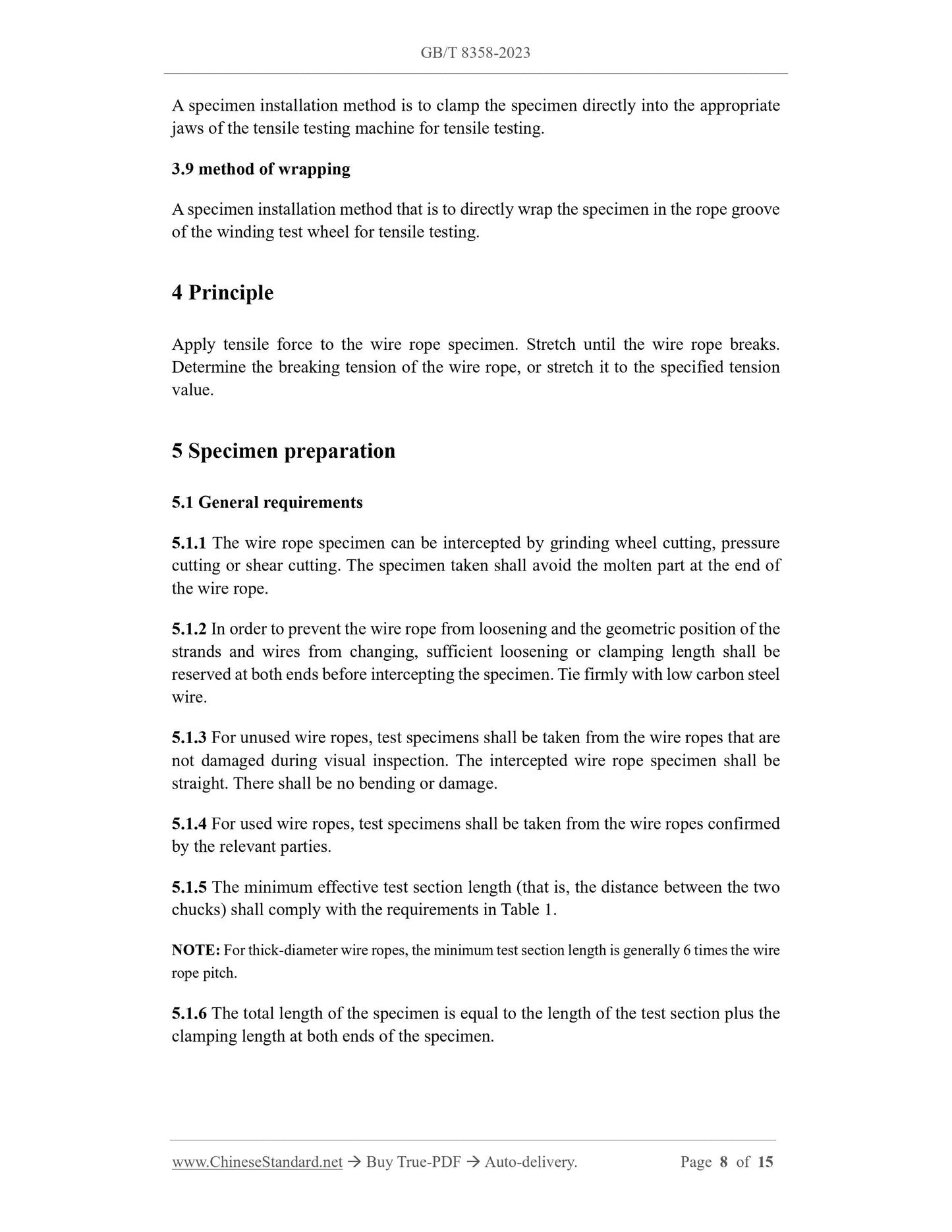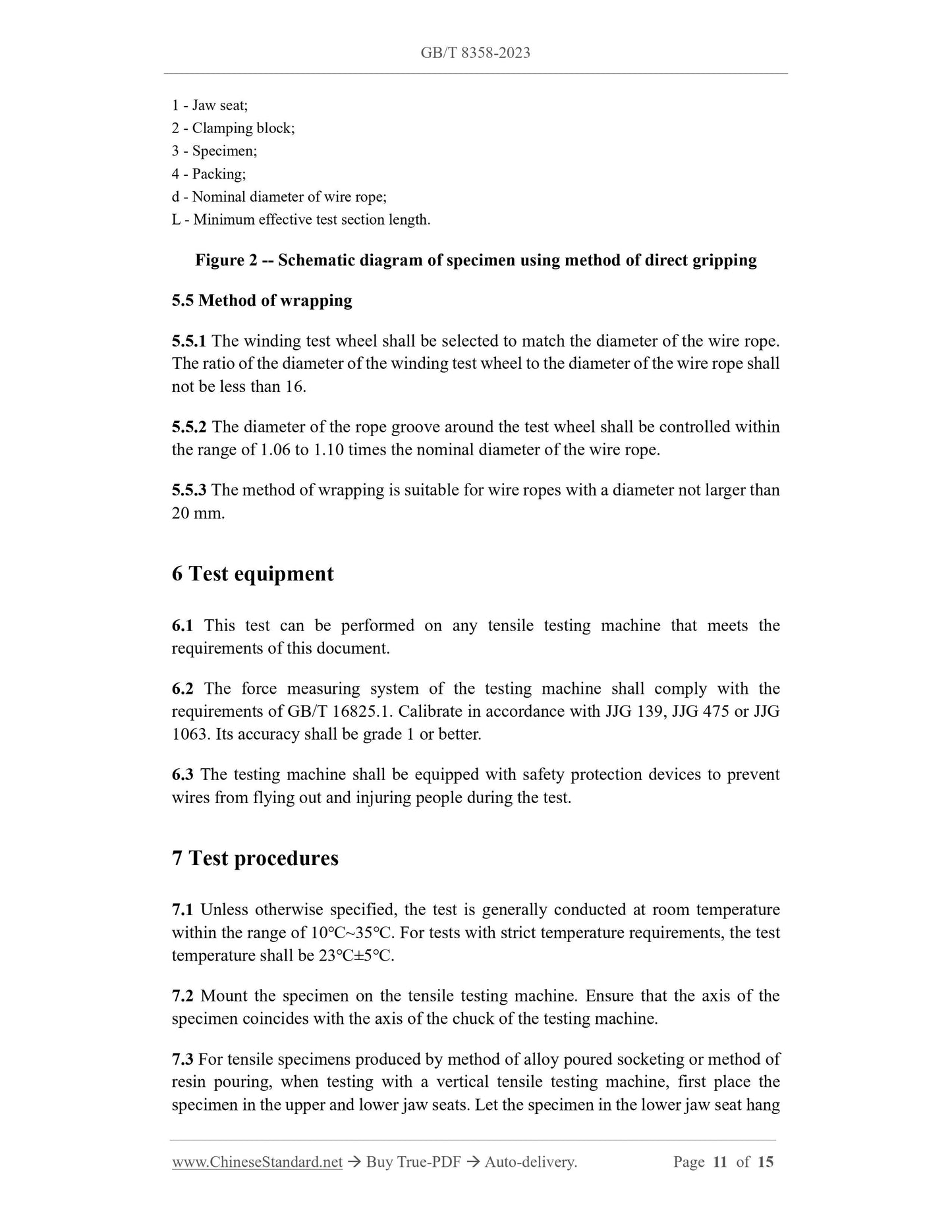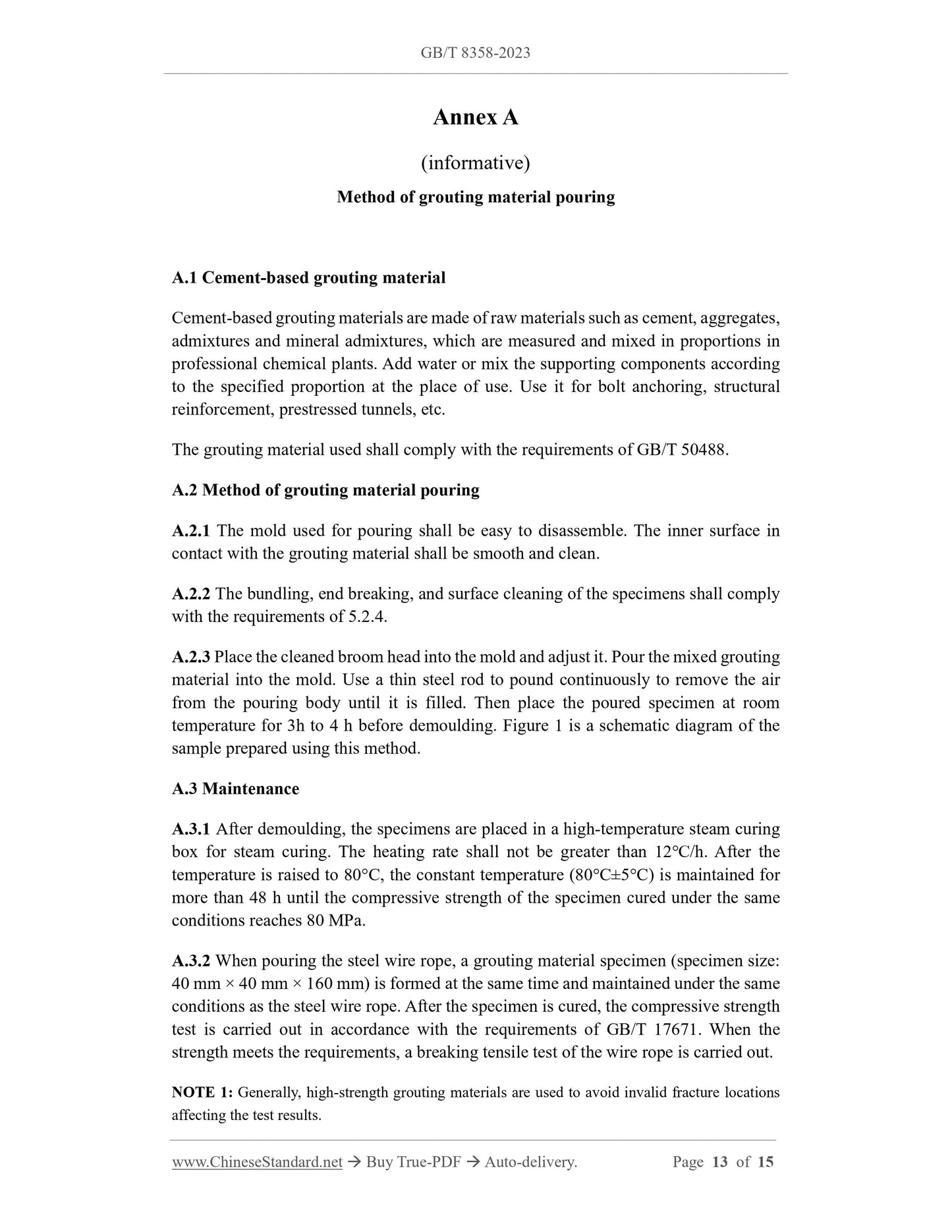1
/
of
6
www.ChineseStandard.us -- Field Test Asia Pte. Ltd.
GB/T 8358-2023 English PDF (GB/T8358-2023)
GB/T 8358-2023 English PDF (GB/T8358-2023)
Regular price
$200.00
Regular price
Sale price
$200.00
Unit price
/
per
Shipping calculated at checkout.
Couldn't load pickup availability
GB/T 8358-2023: Steel wire ropes - Determination of breaking force
Delivery: 9 seconds. Download (and Email) true-PDF + Invoice.Get Quotation: Click GB/T 8358-2023 (Self-service in 1-minute)
Newer / historical versions: GB/T 8358-2023
Preview True-PDF
Scope
This document specifies the principles, specimen preparation, test equipment, testprocedures, and test reports for the method to determine the breaking tensile force of
steel wire ropes.
This document is applicable to the determination of breaking force of various wire rope
products.
Basic Data
| Standard ID | GB/T 8358-2023 (GB/T8358-2023) |
| Description (Translated English) | Steel wire ropes - Determination of breaking force |
| Sector / Industry | National Standard (Recommended) |
| Classification of Chinese Standard | H22 |
| Classification of International Standard | 77.040.10 |
| Word Count Estimation | 11,159 |
| Date of Issue | 2023-05-23 |
| Date of Implementation | 2023-12-01 |
| Older Standard (superseded by this standard) | GB/T 8358-2014 |
| Issuing agency(ies) | State Administration for Market Regulation, China National Standardization Administration |
Share
